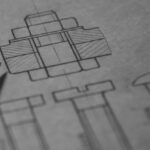In the fast-paced world of manufacturing, the ability to adapt quickly to changing market demands is crucial for success. One of the key strategies that companies employ to enhance their flexibility in manufacturing processes is the use of modular design. This approach involves breaking down complex systems or products into smaller, self-contained modules that can be easily interchanged or replaced. By incorporating modular design principles into their operations, manufacturers can achieve greater agility, efficiency, and cost-effectiveness. Let’s delve deeper into the role of modular design in enhancing manufacturing flexibility.
**Enhancing Adaptability**
At the core of modular design is the concept of adaptability. By breaking down a product or system into modular components, manufacturers can quickly reconfigure their production processes to accommodate changing requirements. This flexibility allows companies to respond rapidly to shifts in consumer preferences, market trends, or regulatory changes. For example, a manufacturer producing electronic gadgets can easily swap out a module containing outdated technology with a new one to keep up with the latest advancements in the industry.
**Reducing Downtime**
Another significant benefit of modular design in manufacturing flexibility is the ability to minimize downtime. When a component of a system fails, traditional manufacturing processes often require extensive troubleshooting and repair work, resulting in costly production delays. With modular design, faulty modules can be easily isolated and replaced without affecting the entire system. This modularity reduces downtime, increases overall equipment efficiency, and ensures smoother operations.
**Streamlining Production**
Modular design also streamlines the production process by enabling parallel development and assembly of different modules. Instead of waiting for one component to be completed before moving on to the next, manufacturers can work on multiple modules simultaneously. This concurrent engineering approach accelerates the overall production timeline and reduces time-to-market for new products. Additionally, modular design facilitates easy scalability, allowing manufacturers to ramp up or down production volumes quickly in response to market demand fluctuations.
**Facilitating Maintenance and Upgrades**
Maintenance and upgrades are inevitable aspects of any manufacturing operation. With modular design, these tasks become more straightforward and cost-effective. By designing products with interchangeable modules, manufacturers can easily perform routine maintenance or upgrade specific components without disrupting the entire system. This modularity also simplifies future product enhancements, as new features or technologies can be seamlessly integrated by swapping out existing modules with upgraded versions.
**Promoting Sustainability**
In today’s environmentally conscious world, sustainability has become a key consideration for manufacturers. Modular design plays a vital role in promoting sustainability by extending the lifespan of products and reducing electronic waste. Instead of replacing an entire product when a component becomes obsolete or fails, consumers can simply replace the affected module. This not only lowers the overall cost of ownership but also minimizes the environmental impact associated with discarding functional components.
**Maximizing Resource Utilization**
Efficient resource utilization is a fundamental aspect of manufacturing flexibility. Modular design optimizes resource allocation by allowing manufacturers to tailor production processes to specific requirements. This customization ensures that resources such as materials, labor, and equipment are utilized effectively, minimizing waste and enhancing overall productivity. Additionally, modular design enables manufacturers to repurpose existing modules for different products, maximizing the value derived from their investments.
**Innovating Through Collaboration**
Collaboration is key to driving innovation in manufacturing. Modular design fosters collaboration by enabling different stakeholders, such as designers, engineers, and suppliers, to work together seamlessly. By defining clear interfaces between modules, collaborators can focus on developing specialized components that integrate seamlessly into the overall system. This collaborative approach encourages creativity, accelerates product development, and enhances the competitiveness of manufacturers in the global marketplace.
**Empowering Continuous Improvement**
Continuous improvement is a core principle of modern manufacturing practices. Modular design supports this philosophy by providing a solid foundation for iterative enhancements and refinements. Manufacturers can incrementally improve individual modules or introduce new modules with enhanced features to stay ahead of the competition. This iterative approach to product development empowers manufacturers to adapt to changing market dynamics, customer preferences, and technological advancements, ensuring long-term success in today’s dynamic business landscape.
**Driving Competitive Advantage**
In conclusion, the role of modular design in manufacturing flexibility is paramount for companies seeking to thrive in a rapidly evolving industry. By embracing modular design principles, manufacturers can enhance their adaptability, reduce downtime, streamline production, facilitate maintenance and upgrades, promote sustainability, maximize resource utilization, drive innovation through collaboration, and empower continuous improvement. Ultimately, modular design serves as a cornerstone for achieving a competitive advantage in an increasingly complex and competitive manufacturing environment.





